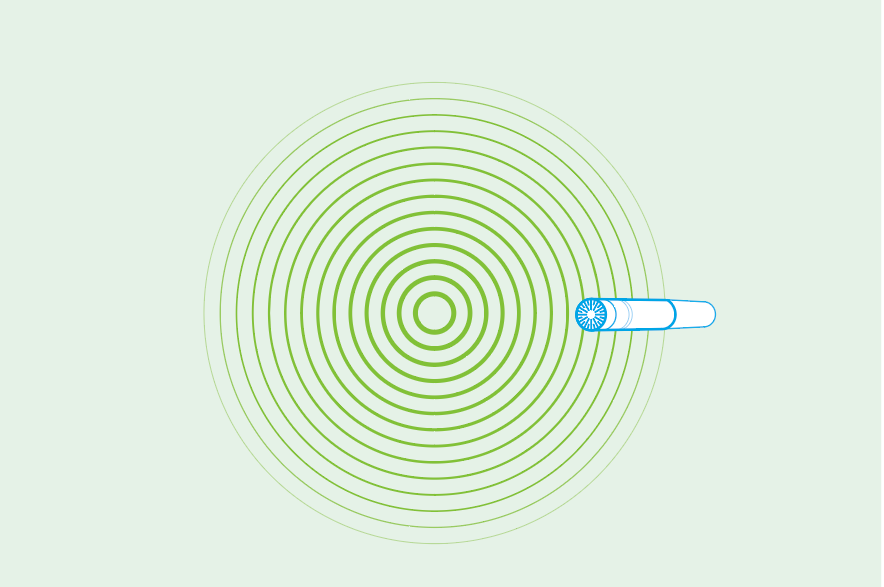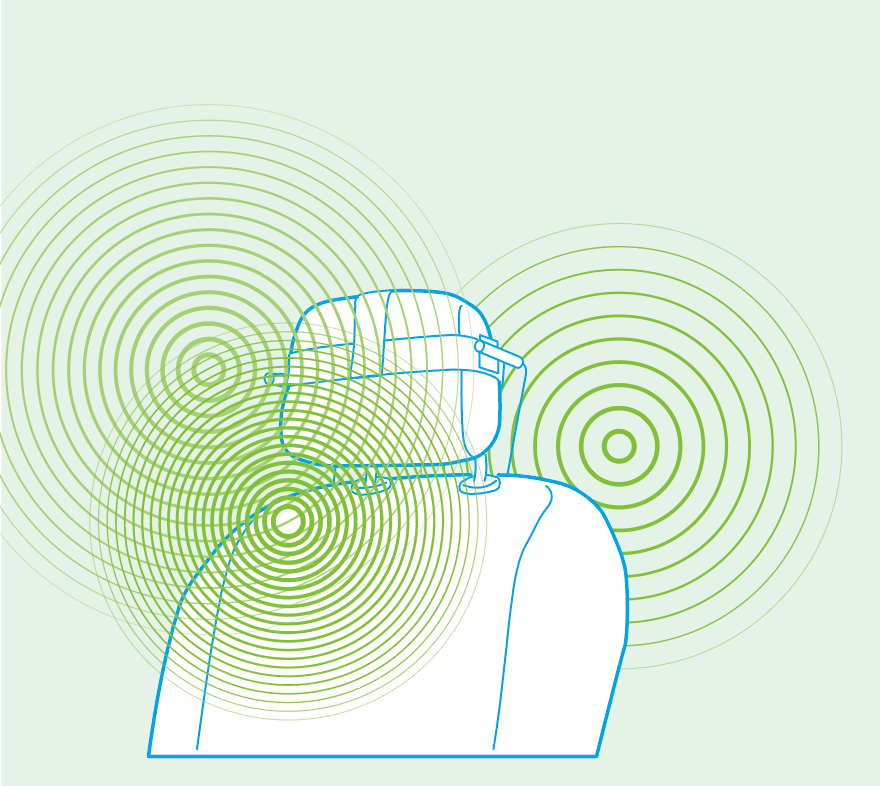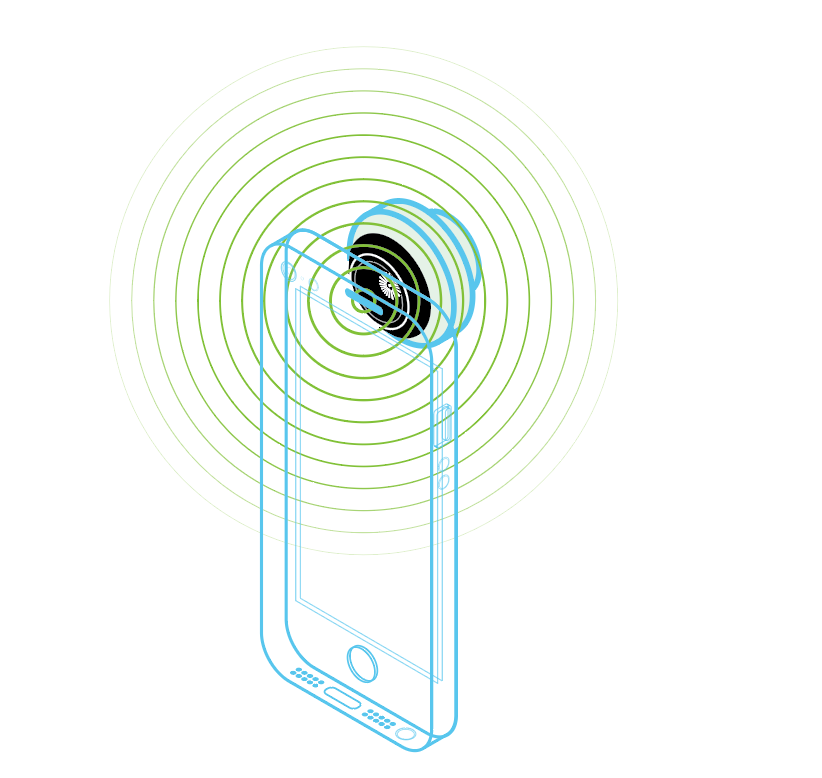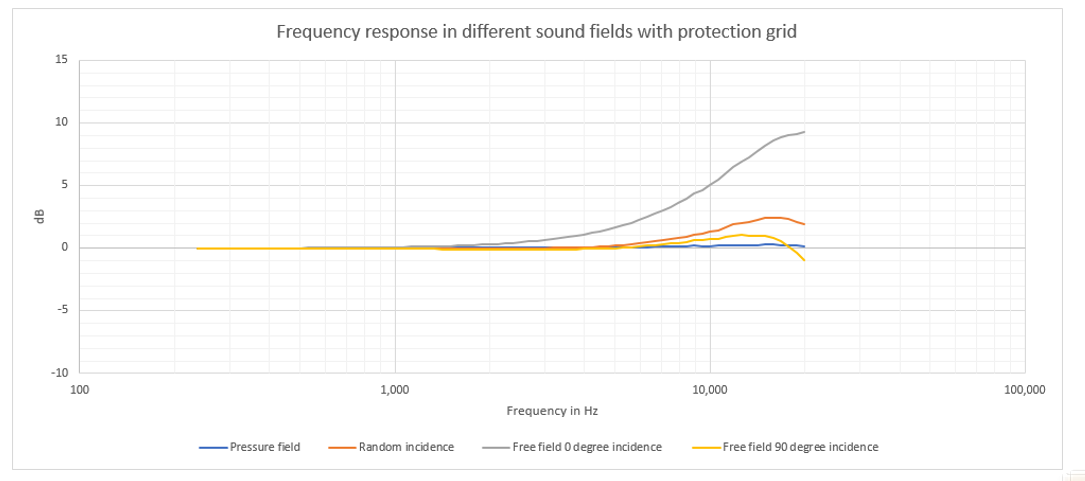
Can pressure-field microphones perform in diffuse and free fields?
Measurement microphones are divided into three main types, each type optimized for one of the three types of sound fields described below, and it is important to choose the microphone that is best suited for the application – otherwise the high frequency response will suffer.
However, the pressure-field microphones can, in some circumstances, be used in all three sound fields. For example, they can be used as free-field microphones if they are oriented at right-angles to the direction of sound propagation (90° incidence) – and the good news is that, in such cases, the effective frequency range will remain unchanged.
For measurements in enclosed areas where reverberations exist, pressure-field microphones adapted for random incidence measurements offer the best alternative – not only in terms of your measurement, but also because there are more to choose from (compared to diffuse-field microphones). This is because the random incidence response of a pressure-field microphone is much ‘flatter’ or constant across the frequency range than that of a free-field response microphone.
So, can pressure-field microphones provide accurate measurements in diffuse and free fields? In short yes, and if you only have access to pressure-field microphones, you might find that they are more useful than you originally thought.
See our latest ½-inch CCLD pressure-field microphone.

Free field
A free field is a sound field where sound waves can propagate freely without any disturbing objects. This means a space with no reflecting objects – the microphone is the only thing that disturbs the sound field. Understandably, ideal free fields are difficult, if not impossible to realize. Sound fields with a close resemblance to free field can be achieved in an anechoic chamber or emulated using a time-selective response (TSR) algorithm.
Free-field microphones are typically used to measure, for example, loudspeakers or outdoor sound.

diffuse field
A diffuse field has so many hard-reflecting surfaces that the sound waves arrive simultaneously from all directions with equal probability and level. Sound fields with a close resemblance to diffuse field are normal in environments such as buildings with hard walls, where many simultaneous sound or noise sources exist, for example, in-cabin measurements, churches and in test boxes that do not resemble anechoic conditions.
Diffuse-field microphones, also known as random-incidence microphones, are designed to have a flat response when signals arrive from all directions and are typically used to measure vehicle interior noise, or building acoustics.

pressure field
A pressure field is sound pressure that has the same magnitude and phase at any position within the field. Sound fields with a close resemblance to the pressure field can be achieved in small cavities (small compared to the wavelength) such as artificial ears, or when measuring very close to a sound port.
Pressure-field microphones are typically used in small, closed couplers, wind tunnels or for flush-mounted measurements.

Subscribe to our newsletter and receive the latest stories from our world of sound and vibration

